Camping is a gratifying pastime, and there are some fantastic wild places to stay the night in Northern Ireland. Here are just a few to inspire you for your next outdoor adventure.
In Northern Ireland, some individuals who prefer to avoid crowded campsites opt for the alternative of wild camping.
To camp in the wild in Northern Ireland, permission from the landowner is required. Several beautiful locations are available for camping with either a tent or a camper van. Still, taking certain precautions before settling in for the night is essential.
It’s essential to know that certain areas may be designated as private property or prohibit camping. Following the regulations and locating an alternative location are recommended to avoid any issues.
Adherence to the wild camping code by leaving no trace and being mindful of the environment and local communities is essential.
Here are ten recommended locations for wild camping in Northern Ireland for those seeking adventure.
The Ards Peninsula

The Ards Peninsula is located south of Belfast and Bangor and is known for its stunning coastal scenery. Bangor is a famous seaside town in Ireland that is worth visiting.
The area is ideal for exploration, with wild camping options, including at Portavogie, Ireland’s most easterly point.
Benone Beach, Co. Derry – wake up to the waves.

This beach is a suitable location for an overnight stay. It is essential to check the tide conditions beforehand, as driving onto the beach depends on it.
Before camping in any area, it is essential to verify whether there are any restrictions or regulations. If given permission, it is necessary to properly dispose of any waste and adhere to the rules set by the landowner or authority.
Causeway Coast, Co. Antrim – a world-famous drive

The Causeway Coast region contains notable tourist sites, including the Giant’s Causeway and Bushmills Distillery.
The presence of nearby attractions elevates this wild camping spot as one of the best in Northern Ireland.
The region has various camping options, ranging from designated parking areas and secluded spots for tent pitching. Regardless of the location, the surroundings offer breathtaking scenery.
Foyle Valley, Co. Tyrone – remote camping opportunities
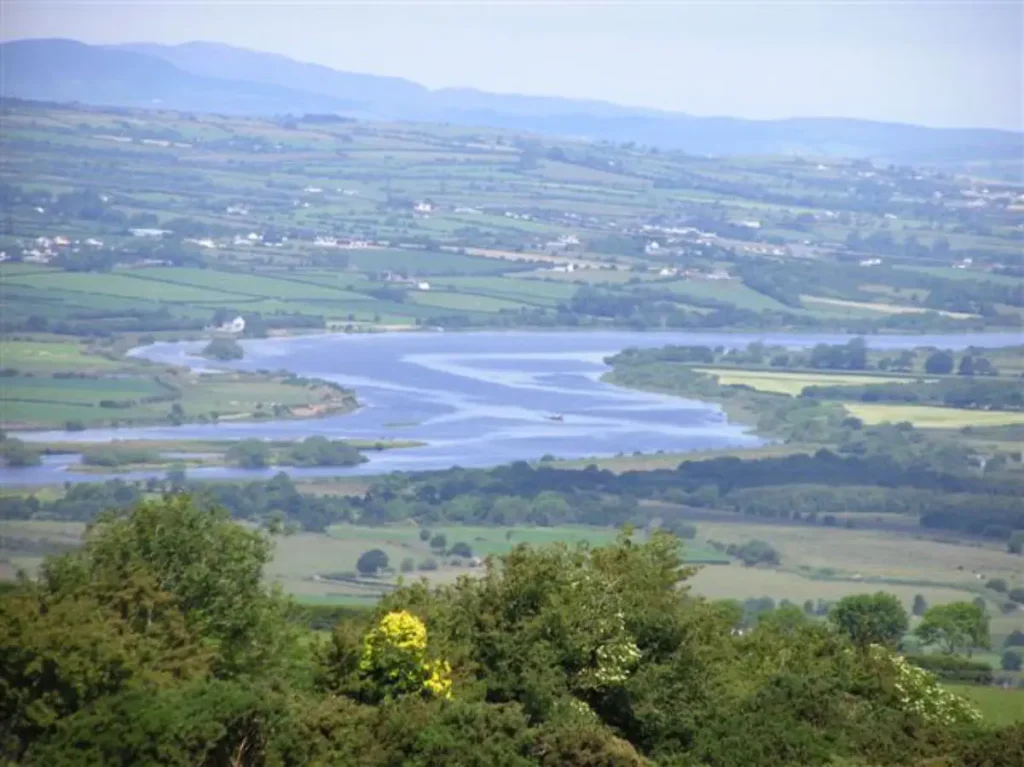
The Foyle Valley is a stunning landscape in Northern Ireland, located northwest of the country. It is centred around the River Foyle, which flows from the Sperrin Mountains to Derry/Londonderry and into the Atlantic Ocean. The landscape is characterized by rolling hills, lush green forests, and the meandering river.
For those interested in wild camping, the Foyle Valley offers a beautiful setting to pitch a tent and immerse oneself in nature. There are many options for wild camping in the area. Still, it is important to seek permission from the landowner before setting up camp.
One of the benefits of wild camping in the Foyle Valley is the diversity of the landscape. There are many quiet spots along the riverbanks where campers can pitch their tents and enjoy the sound of the flowing water. The hills and forests offer more secluded locations for camping, with stunning views of the surrounding countryside.
There are also many opportunities for hiking and exploring the area. At the same time, wild camping in the Foyle Valley and several hiking trails wind through the surrounding hills and forests.
The Glens Of Antrim
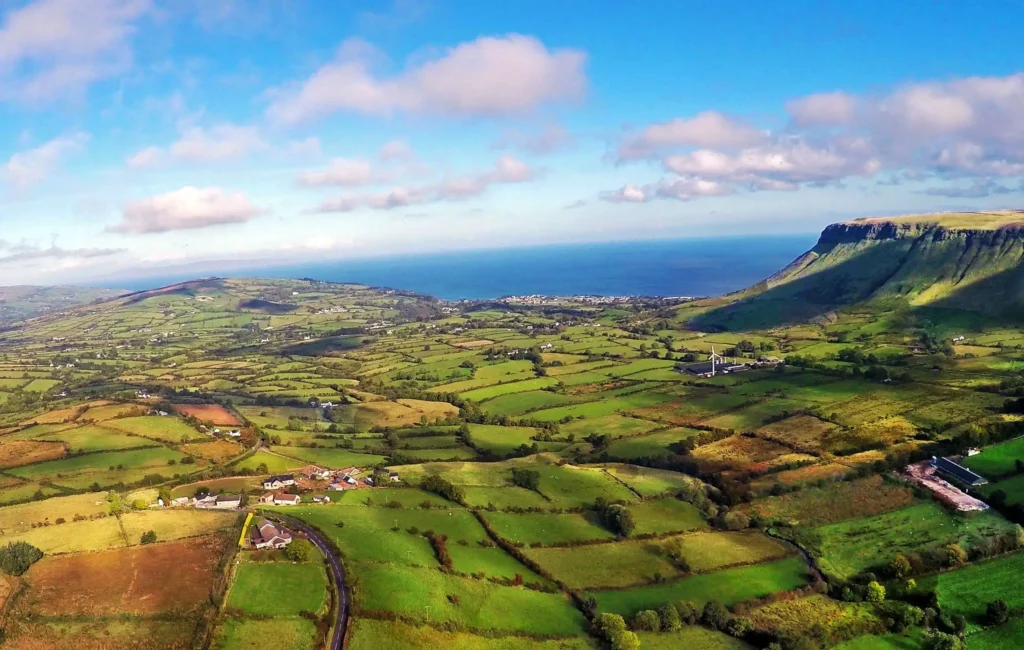
The Glens of Antrim are a series of nine glens (or valleys) located along the northeast coast of Northern Ireland in County Antrim. This area is known for its stunning natural beauty, rugged coastline, rolling hills, and lush green forests.
For those interested in wild camping, the Glens of Antrim offer a perfect setting to pitch a tent and immerse oneself in nature. There are many options for wild camping in the area. Still, it is important to seek permission from the landowner before setting up camp.
One of the benefits of wild camping in the Glens of Antrim is the diverse range of landscapes to explore. From the steep cliffs and rocky beaches along the coast to the tranquil forests and babbling streams in the valleys, there is something for every nature lover.
One of the most popular areas for wild camping in the Glens of Antrim is Glenariff Forest Park. This park covers over 1,000 hectares of forest and offers several designated camping areas. Campers can pitch their tents in a peaceful woodland setting and explore the many hiking trails that wind through the park.
Another option for wild camping in the Glens of Antrim is along the Causeway Coast Way, a long-distance hiking trail that runs along the coast. This trail offers stunning views of the sea and rugged cliffs, and there are many secluded spots where campers can pitch their tents for the night.
Lough Erne, Co. Fermanagh – a night by the lake
The Lakelands in Northern Ireland offer excellent opportunities for wild camping.
There are various overnight camping options in Lower and Upper Lough Erne.
Lough Neagh, various counties – stunning views by the lake
Lough Neagh, located in Northern Ireland, is the largest freshwater lake in the area and offers various wild camping spots with beautiful views and recreational opportunities.
There are many options for camping around the lough, including spots for wild camping and several established campsites.
Kilbroney Forest Park, Co. Down – venture into the wild
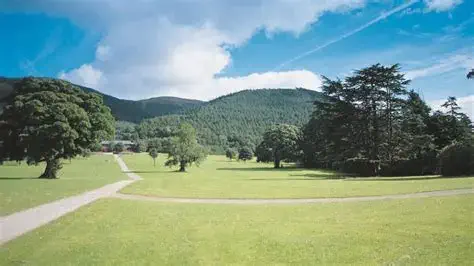
This location offers numerous opportunities for hiking, picnicking, and experiencing untouched wilderness, making it a suitable place to set up a tent.
For those with a camper, there are nearby overnight parking options. Still, the most enjoyable aspects of this location require travelling on foot.
Murlough Bay, Co. Antrim – views for days.

This region has many scenic viewpoints on the way to Murlough Bay. Additionally, it may be possible to camp at Torr Head with permission from the landowner.
This region offers opportunities for wild camping with stunning views and scenic hiking trails.
Mourne Mountains, Co. Down
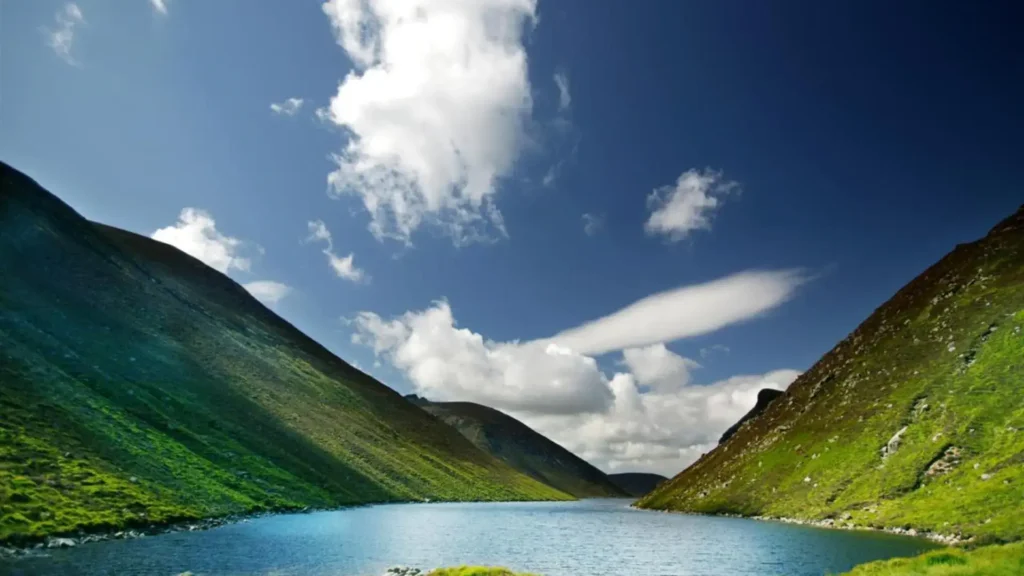
The Mourne Mountains, situated in the southeast of Northern Ireland, offer numerous hiking trails and breathtaking views, making it an excellent spot for camping.
For those travelling in a campervan, numerous car parks and rural areas are available. If opting for a tent, individuals may venture deeper into nature to locate a suitable spot for the evening.
Tollymore Forest Park in Co. Down offers comfortable camping facilities and scenic walking trails near Slieve Donard. The campsite is managed by the Northern Ireland Forestry Service.
Visitors to Northern Ireland can enjoy outdoor activities such as trekking up Slieve Donard, the highest mountain in the area, or exploring the many walking and hiking trails.
The Sperrin Mountains

The Sperrin Mountains are a range of hills in Northern Ireland located northwest of the country. The landscape is characterized by rolling hills, heather-covered moors, and deep river valleys. The highest peak in the range is Sawel Mountain, which reaches a height of 678 meters (2,224 feet).
Wild camping in the Sperrin Mountains is a fantastic way to experience the area’s natural beauty. There are several places where wild camping is permitted. Still, it’s important to seek permission from the landowner before pitching your tent. It’s also essential to follow the Leave No Trace principles to minimize your impact on the environment.
One of the benefits of wild camping in the Sperrin Mountains is the sense of solitude and peace that comes from being immersed in nature. At night, the sky is often filled with stars; the only sounds are the rustle of the wind in the grass and the occasional bird call.
Strangford Lough, Co. Down – plenty of camping choices
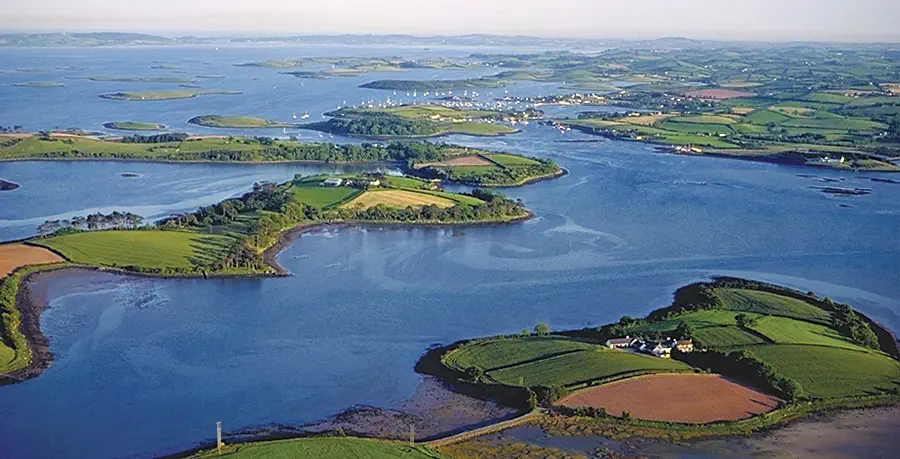
Strangford Lough is a large sea Lough in County Down, Northern Ireland. It is the largest inlet in the British Isles and is home to a diverse range of flora and fauna. Strangford Lough offers a unique and beautiful setting for those interested in wild camping to pitch a tent and immerse themselves in nature.
One of the benefits of wild camping in Strangford Lough is the stunning natural beauty of the area. The lough is surrounded by rolling hills and lush green forests, and the coastline is rugged and dramatic. There are several small islands in the lough, which offer a unique and secluded location for camping.
Another benefit of wild camping in Strangford Lough is the abundance of wildlife in the area. The lough has many birds, including Brent geese, terns, and oystercatchers. The site also has seals, otters, and dolphins, making for a genuinely immersive nature experience.
There are several options for wild camping in Strangford Lough. There are several designated camping areas, such as the Castle Ward Estate, which offers a peaceful and secluded setting for camping. Several small islands in the lough, such as Sketrick Island, are open for camping.
One of the best ways to explore the area while wild camping in Strangford Lough is by kayak or canoe. Several rental companies offer kayaks and canoes. Exploring the lough by water is a great way to get close to the wildlife and explore the coastline.
Here are some of the most popular FAQs searched on Google for wild camping in Northern Ireland:
Is wild camping legal in Northern Ireland?
Wild camping in Northern Ireland is a grey area, and the answer to this question is not straightforward. While no specific legislation addresses wild camping, the general rule is that camping is not allowed on private land without the landowner’s permission.
In some areas of Northern Ireland, such as the Mourne Mountains, wild camping is allowed in designated areas with a permit from the local council. Wild camping is not allowed in other areas, such as the Causeway Coast.
It is essential to research before going wild camping in Northern Ireland and to seek permission from the landowner before setting up camp.
In summary, while wild camping in Northern Ireland is not explicitly illegal, respecting private property and seeking permission before camping on someone else’s land is essential.
Where are the best places for wild camping in Northern Ireland?
Our top five places to go wild camping would be
- Glenariff Forest Park – Glenariff Forest Park in County Antrim offers secluded and peaceful camping areas.
- Lough Navar Forest – Lough Navar Forest in County Fermanagh offers scenic views of the surrounding countryside.
- Castle Ward Estate – Castle Ward Estate in County Down offers a peaceful and secluded setting for camping.
- Cuilcagh Mountain – Cuilcagh Mountain in County Fermanagh offers breathtaking views and several camping areas.
- Portrush Whiterocks Beach. Nestled between Royal Portrush Golf Club, the Atlantic Ocean and Dunluce Castle. This is an excellent place to camp on a beach. In high summer, you’ll see the Sun rising over Dunluce Castle and setting over Portrush and Donegal.
What are the rules and regulations for wild camping in Northern Ireland?
Wild camping in Northern Ireland is not regulated by specific legislation. Still, some general rules and regulations should be followed to ensure that you camp safely and responsibly. Here are a few guidelines to keep in mind:
- Ask permission: Always ask for permission before camping on private land. If camping in a designated area, follow any rules or regulations the landowner sets.
- Leave No Trace: The Leave No Trace principles are essential when camping in any wilderness area. This includes packing all trash, burying human waste, and leaving the campsite as you find it.
- Campfires: Open fires are generally not allowed in Northern Ireland except in designated areas. Use a camping stove for cooking, and do not leave any coals or ashes behind.
- Water sources: Treat all water sources before drinking, and do not contaminate the water source with soap or other pollutants.
- Wildlife: Respect the local nature by keeping a safe distance and not disturbing their habitat. Do not feed wild animals.
- Safety: Be aware of your surroundings and take steps to ensure your safety. This includes checking the weather forecast, setting up camp safely, and bringing appropriate gear and supplies.
- Respect other campers: Keep noise to a minimum and respect the privacy of other campers in the area.
Remember that some areas may have specific rules or regulations regarding camping, so it is essential to do your research ahead of time and follow any guidelines set by the landowner or local authorities.
Do I need a permit to go wild camping in Northern Ireland?
The answer to this question depends on where you plan wild camping in Northern Ireland. Some areas require a permit or permission from the landowner, while other sites do not.
In general, if you plan to camp in a designated camping area, such as those found in the Mourne Mountains, you may need a permit from the local council. However, you plan to camp in a more remote area like the Sperrin Mountains. In that case, you may not need a permit but should still seek permission from the landowner if camping on private land.
Researching and determining if a permit is required for the area you plan to visit is always a good idea. You can contact the local council or landowner to learn about any rules or regulations for camping in the area. Following any guidelines or permit requirements will help ensure that you have a safe and enjoyable camping experience.
What are the best times of year to go wild camping in Northern Ireland?
The best times of year to go wild camping in Northern Ireland are during the late spring, summer, and early autumn months. This is typically between May and September when the weather is usually mild and dry.
During this time, the days are longer, giving you more daylight hours to explore the outdoors and set up camp. The temperatures are also generally warmer, making it more comfortable to sleep outdoors.
It’s worth noting that Northern Ireland’s weather can be unpredictable, so it’s always a good idea to check the forecast before you head out and be prepared for changing conditions. Be sure to bring appropriate clothing, footwear, and gear to keep you warm and dry in case of rain or cooler temperatures.
- What equipment do I need for wild camping in Northern Ireland?
- Can I have a campfire while wild camping in Northern Ireland?
- What are the risks of wild camping in Northern Ireland?
- What are the best times of year to go wild camping in Northern Ireland?
- Are there any restrictions on wild camping near the coast in Northern Ireland?

